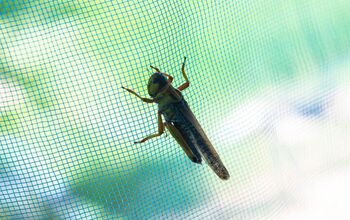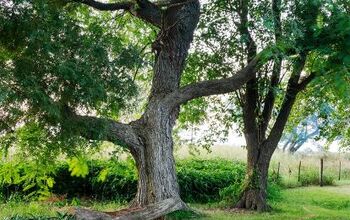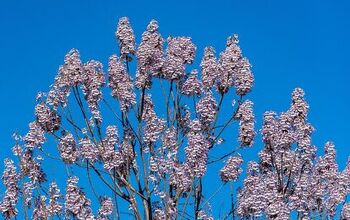What Are The Pros And Cons Of A Black Gum Tree?

Australian music teacher Marion Sinclair wrote a song for her students about black gum trees. Maybe you’ve heard it? “Kookaburra sits in the old gum tree, eating all the gumdrops he can see.” The beauty of the gum tree and its animal inhabitants deserves to be remembered in song.
Though they don’t add much value to properties, black gum trees are an excellent ornamental landscaping choice. They produce beautifully colored leaves in the summer and fall and fruit that attract wildlife. A slow-growing tree, black gum trees need adequate space to spread their roots. On average, they grow between 30 and 50 feet high. They are adaptable, growing in many different habitats.
Do You Need Landscaping Services?
Get free, zero-commitment quotes from pro contractors near you.

Black Gum Tree Habitats
Also known as black tupelo, black gum trees grow mostly in the mid-eastern and eastern coastal areas of the United States. They are found in USDA Hardiness Zones 4-9. These areas stretch from southern Ontario and Maine down to Florida and over to Texas.
Though they’re usually found in wet areas, black gum trees are adaptable. Their habitats range from swampy wetlands to rocky upland woodlands and upland sand flats. Because they have some drought tolerance, black gums are able to grow in drier areas.
While they can tolerate shade, black gum trees prefer the sun and require moderate water for optimal growth. They grow best in moist, acidic soil that drains well and are considered winter-hardy trees.
Ornamental Values
If you’re considering planting black gum trees on your property, know that they won’t necessarily add value. However, they are a terrific ornamental landscaping choice.
They can be planted singularly for shade. But when planted in groups, their beauty is spectacular to behold.
Leaves
Black gum tree leaves are oval-shaped and fall off each winter. In September, they turn from a luscious, glossy dark green to yellow. And as autumn goes on, the leaves deepen to lovely reds and purples.
Pro: Their leaves are thin, allowing light to pass through. This makes the red leave appear to glow, earning them the nickname wildfire black tupelo trees.
Flowers
During April and May, black gum trees produce clusters of light greenish-white flowers. These are situated close to the leaves.
Pro: The flowers aren’t significant enough to cause lots of mess when they drop.
Fruit
As the Kookaburra song suggests, black gum trees produce fruit that attracts birds, insects, and small mammals such as squirrels and deer. The fruit resembles blue grapes or berries which are high in crude fat, calcium, phosphorus, and fiber. It ripens in the fall.
Con: What fruit isn’t eaten by animals drops beneath it. That coupled with the animal droppings makes for a slippery area on sidewalks, patios, and decks. Because of this, black gum trees aren’t ideal for highly populated areas.
Growth
Black gum trees are considered slow to moderate-growing trees. In 10-15 years, they can grow 12-15 feet.
Pro: Because they grow on the slower side, black gums have a long lifespan. They can live over 650 years!
Con: These trees need adequate space for their roots to spread. Black gum trees are not easy to come by in nurseries because they develop a large, deep taproot early on. This makes transportation difficult.
Size
They are medium-sized trees that shed their leaves annually. On average, they grow to a height of 30-60 feet with a width of 20-30 feet. They have the potential to reach a height of 75 feet in optimal growing conditions.
Con: It’s not ideal to grow black gum trees in areas with height restrictions, such as places with low-hanging electrical wires.
Shape
Early on, they have a pyramid shape, but as they grow, they develop a flat top. Unlike oak trees which have a decurrent form, black gum trees are excurrent. This means one branch develops as the leader with other smaller branches growing horizontally from the trunk.
Pro: When the branches are smaller in diameter than the trunk, the joints are stronger. This makes them less likely to fall off, causing damage to the tree and its surroundings. After high winds or storms, there is not much debris beneath these trees.
Wood
The black gum tree’s bark is deeply ridged and resembles alligator skin. When you cut into the trunk, you see the wood is light, fine-textured, and uniform.
Pro: The wood has many uses, including flooring, lumber, and paper pulp among other things. It also has a low value, making it an economical choice.
Con: It’s very difficult to split with an ax. So if you’re into cutting your own wood for a fire, stay away from black gum.
Pests and Disease
At the moment, there are no significant pests or diseases that specifically attack black gum trees. That being said, that doesn’t mean black gums don’t see any problems.
Common problems for black gum trees include canker, leaf spots, rust, black twig borer, and scales.
Black Twig Borers
Unlike the epidemic of Emerald Ash Borers found in the wood of ash trees, Black Twig Borers aren’t causing extinction in black gum trees.
The first sign of damage from these little guys is twig and leaf wilting. They bore into branches and leaves, leaving behind tiny holes. On top of that, they also infest the tree with a fungus. As the fungus spreads, more leaves and branches wilt and, eventually, stop growing.
To control and prevent black tree borers, prune the affected area until you see healthy wood. The key is to catch them early. Once these beetles infest your tree, they can’t be controlled with pesticides or their fungus with fungicide. After removing the affected branches, certain pesticides may work to prevent further infestation.
Caring for a Black Gum Tree
The main components of caring for a black gum tree include fertilizer, water, and maintenance around the tree area.
Fertilizer
Using a slow-release granular fertilizer, feed the tree in the fall. Determine the diameter of the trunk from 4 feet above the ground. Then, apply 2 cups of fertilizer for every 1 inch of trunk diameter.
Starting at the trunk, spread the fertilizer 1 ½ times the distance from the trunk to the edge of the branches. For example, if the trunk is 5 feet from the edge of the branches, spread the fertilizer 7 ½ feet from the trunk.
Water
While the tree is young, the soil needs water twice a week. Run your sprinkler for 45 minutes per session. If using a drip irrigation system, you need two emitters per tree which should run for 30 minutes.
After the tree is established, rainwater is sufficient to keep it thriving. If a drought occurs, water the tree once a week—45 minutes on a sprinkler or 90 minutes with an irrigation system.
Maintenance
Keep the area around the tree clear by raking and disposing of any fallen or decaying branches, leaves, and fruit. Unless the tree is infested or diseased, pesticides, fungicides, and pruning aren’t necessary.
Related Questions
Do you have more questions about black gum trees? You’re in luck. Below are some questions other people had regarding the pros and cons of black gum trees.
Are black gum berries edible?Technically, yes, they are edible but barely. The skin is thick, which is not all that appealing. And the pulp is sour and bitter, which is why they’re also called sour gum trees. If the fruit is used at all, it’s usually in a sweetened preserve.
What is black gum used for?Because of the durability of its interlocking grain, black gum was once used for oxen yolk or chopping bowls. Even though its timber isn’t considered beautiful by woodworking standards, it’s still used today. It’s used most often in furniture, railroad ties, cabinets, and caskets.
What’s the difference between black gum trees and sweet gum trees?While both trees produce flowers, berries, and brilliant-colored leaves, they have some differences. Sweetgum trees are named as such because of the sweet aroma of their sap. Their berries are just as bitter as the black gum berries.
Sweetgum leaves have 3 to 7 lobes compared to the oval-shaped leaves of black gums.
Lastly, their woods differ in color. Sweet gums have sapwood ranging from white to light pink and heartwood that’s reddish-brown. Black gums have light gray-brown sapwood and dark gray-brown heartwood.
Is black gum a good street tree?Because of their hardy and adaptable nature, black gum trees perform well in a variety of habitats. In urban and suburban areas, black gum trees have done well in parks, wide tree lawns, medium and large parking lot islands, and yes, as street trees.
Do You Need Landscaping Services?
Get free, zero-commitment quotes from pro contractors near you.

Summing It Up
Perhaps the biggest benefit of black gums trees is their beauty. They offer rich colors across the seasons that are guaranteed to return each year. Slow-growing and durable, they have a long lifespan.
Black gums are not without their faults, though. Their fruit attracts animals and leaves a slippery mess at their base. Due to their deep taproot, black gum trees are hard to find in nurseries because transporting them is difficult. You also have to pay attention to where you plant them because of how tall they grow.
Related Guides

Brigid Levi is a wife, mother, and freelance writer who enjoys a good DIY project and creating beautiful spaces within her home. From cleaning and organization hacks to home decor ideas, she loves helping people in their quest to turn a house into a home. Her hobbies include pretending to be Joanna Gaines while updating her home with her husband and performing in local theater productions.
More by Brigid Levi



























